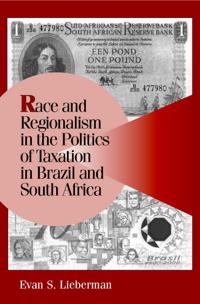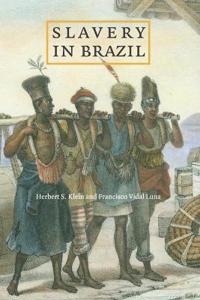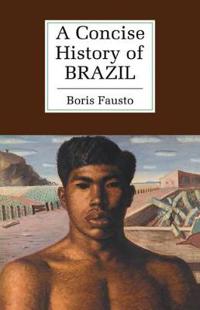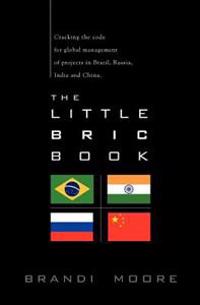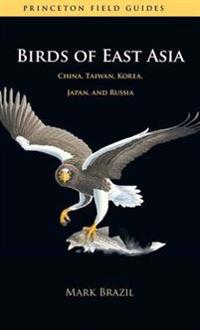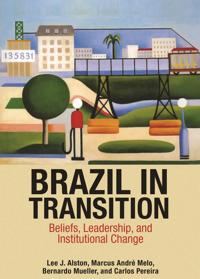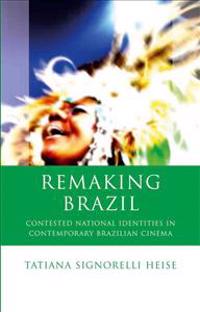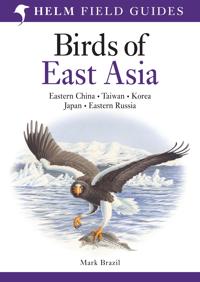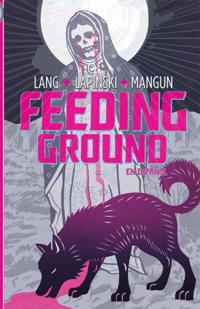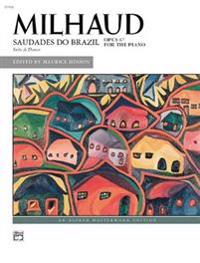Manufacturing Militance: Workers' Movements in Brazil and South Africa, 1970-1985 (Övrig)
avGay W. Seidman
ISBN: 9780520083035 - UTGIVEN: 1994-05-05Challenging prevailing theories of development and labor, Gay Seidman's controversial study explores how highly politicized labor movements could arise simultaneously in Brazil and South Africa, two starkly different societies. Beginning with the 1960s, Seidman shows how both authoritarian states pr[...]
Welcoming the Undesirables: Brazil and the Jewish Question (Övrig)
avJeffrey Lesser
ISBN: 9780520084131 - UTGIVEN: 1995-01-06Jeffrey Lesser's invaluable book tells the poignant and puzzling story of how earlier this century, in spite of the power of anti-Semitic politicians and intellectuals, Jews made their exodus to Brazil, "the land of the future." What motivated the Brazilian government, he asks, to create a secret ba[...]
Vale of Tears: Revisiting the Canudos Massacre in Northeastern Brazil, 1893-1897 (Pocket)
avRobert M. Levine
ISBN: 9780520203433 - UTGIVEN: 1995-12-26Violence in the City of Women: Police and Batterers in Bahia, Brazil (Övrig)
avSarah J. Hautzinger
ISBN: 9780520252776 - UTGIVEN: 2007-09-17Brazil's innovative all-female police stations, installed as part of the return to civilian rule in the 1980s, mark the country's first effort to police domestic violence against women. Sarah J. Hautzinger's vividly detailed, accessibly written study explores this phenomenon as a window onto the shi[...]
Lula of Brazil: The Story So Far (Övrig)
avRichard Bourne
ISBN: 9780520261556 - UTGIVEN: 2009-10-09Luiz Inacio Lula da Silva's dramatic life story has captured the imagination of millions, and his progressive politics have brought hope and excitement to Brazil - and the world. This compelling work is the first major English-language biography of the metalworker who became president of Latin Ameri[...]
Holy Harlots: Femininity, Sexuality, and Black Magic in Brazil (Övrig)
avKelly E. Hayes
ISBN: 9780520262645 - UTGIVEN: 2011-05-11"Holy Harlots" examines the intersections of social marginality, morality, and magic in contemporary Brazil by analyzing the beliefs and religious practices related to the Afro-Brazilian spirit entity Pomba Gira. Said to be the disembodied spirit of an unruly harlot, Pomba Gira is a controversial fi[...]
Race and Regionalism in the Politics of Taxation in Brazil and South Africa (Häftad)
avEvan S. Lieberman
ISBN: 9780521016988 - UTGIVEN: 2003-09Nationally-specific definitions of citizenship proved decisive for the development of the Tax State in Brazil and South Africa in the twentieth century. Although both countries had been divided along racial and regional lines in the late nineteenth century, watershed constitutions addressed these po[...]
Slavery in Brazil
ISBN: 9780521141925 - UTGIVEN: 2009-10Brazil was the American society that received the largest contingent of African slaves in the Americas and the longest lasting slave regime in the Western Hemisphere. This is the first complete modern survey of the institution of slavery in Brazil and how it affected the lives of enslaved Africans. [...]
Immigration, Ethnicity, And National Identity In Brazil, 1808 To The Present (Pocket)
avJeffrey Lesser
ISBN: 9780521145350 - UTGIVEN: 2013-01-21This book examines the immigration to Brazil of millions of Europeans, Asians, and Middle Easterners beginning in the nineteenth century.[...]
Immigration, Ethnicity, And National Identity In Brazil, 1808 To The Present (Inbunden)
avJeffrey Lesser
ISBN: 9780521193627 - UTGIVEN: 2013-01-21This book examines the immigration to Brazil of millions of Europeans, Asians, and Middle Easterners beginning in the nineteenth century.[...]
A Concise History of Brazil (Häftad)
avBoris Fausto
ISBN: 9780521565264 - UTGIVEN: 199904A Concise History of Brazil covers almost 500 years of Brazilian history, from the arrival of the Portuguese in the New World to the political events that defined the transition in recent years from an authoritarian to a democratic political regime. Brazilian territorial unity and national identity [...]
The Little Bric Book: Cracking the Code for Global Management of Projects in Brazil, Russia, India and China. (Häftad)
avBrandi Moore, Stephanie Vozza
ISBN: 9780615408996 - UTGIVEN: 2010-10Orpheus and Power: The "Movimento Negro" of Rio De Janeiro and Sao Paulo, Brazil 1945-1988 (Pocket)
avMichael George Hanchard
ISBN: 9780691002705 - UTGIVEN: 1998-10-19Politics of Market Reform in Fragile Democracies, The: Argentina, Brazil, Peru, and Venezuela (Pocket)
avKurt Weyland
ISBN: 9780691117874 - UTGIVEN: 2004-04-05Birds of East Asia: China, Taiwan, Korea, Japan, and Russia (Häftad)
avMark Brazil, Dave Nurney, Per Alstrom
ISBN: 9780691139265 - UTGIVEN: 200901With 234 superb color plates, and more than 950 color maps, "Birds of East Asia" makes it easy to identify all of the region's species. The first single-volume field guide for eastern Asia, the book covers major islands including Japan and Taiwan, as well as the Asian continent from Kamchatka to the[...]
Brazil in Transition
ISBN: 9780691162911 - UTGIVEN: 2016-05Brazil is the world's sixth-largest economy, and for the first three-quarters of the twentieth century was one of the fastest-growing countries in the world. While the country underwent two decades of unrelenting decline from 1975 to 1994, the economy has rebounded dramatically. How did this nation [...]
Becoming Black Political Subjects: Movements and Ethno-Racial Rights in Colombia and Brazil
ISBN: 9780691169385 - UTGIVEN: 2016-07After decades of denying racism and underplaying cultural diversity, Latin American states began adopting transformative ethno-racial legislation in the late 1980s. In addition to symbolic recognition of indigenous peoples and black populations, governments in the region created a more pluralistic m[...]
Remaking Brazil (Häftad)
avTatiana Signorelli Heise
ISBN: 9780708325094 - UTGIVEN: 201207This volume examines Brazilian films released between 1995 and 2010, with special attention to issues of race, ethnicity and national identity. Focusing on the idea of the nation as an 'imagined community', the author discuss the various ways in which dominant ideas about brasilidade (Brazilian nati[...]
The Whooper Swan (Inbunden)
avMark Brazil
ISBN: 9780713665703 - UTGIVEN: 200311The Whooper Swan has the most extensive range of all the world's seven swan species, and to people in many nations it is the archetypical swan species. The species is also strongly migratory, and the annual appearances of bulging" flocks of these beautiful white birds herald seasonal change and have[...]
Birds of East Asia (Häftad)
avMark Brazil
ISBN: 9780713670400 - UTGIVEN: 200901This is the first single volume guide ever devoted to the eastern Asian avifauna. The eastern Asian region, centering especially on the major islands off the continental coast (including Japan and Taiwan) and the immediately adjacent areas of the Asian continent from Kamchatka in the north and inclu[...]
Brazil's Modern Architecture (Häftad)
avFridtjof Hjertaas, Kai Lennert Johansen
ISBN: 9780714848457 - UTGIVEN: 2007-09Brazil's architecture is strikingly distinct from Latin America as a whole and diverse in itself. Yet coverage of the architecture of twentieth-century Brazil is all too often confined to the work of one man (Oscar Niemeyer) or the buildings of two cities (Rio de Janeiro and Sao Paulo). In "Brazil's[...]
Brazil
ISBN: 9780714867496 - UTGIVEN: 2014-10An overview of contemporary Brazilian culture from photography to fashion, street art to gastronomy and architecture to music. A fresh look at one of the most exciting countries on the planet from those who know it best.[...]
Brazil: Your Passport to a New World of Music [With CD] (Okänt format)
ISBN: 9780739024768 - UTGIVEN: 2002-06Milhaud -- Saudades Do Brazil (Okänt format)
ISBN: 9780739029718 - UTGIVEN: 2002-12Milhaud's recollections from his nearly two years in Rio de Janeiro (1917-18) compelled him to compose this series of poetic dances---each capturing the unique charms of Rio's different districts, and reflecting the mood and atmosphere of Brazil. Influened greatly by tango rhythms, these dances are [...]







